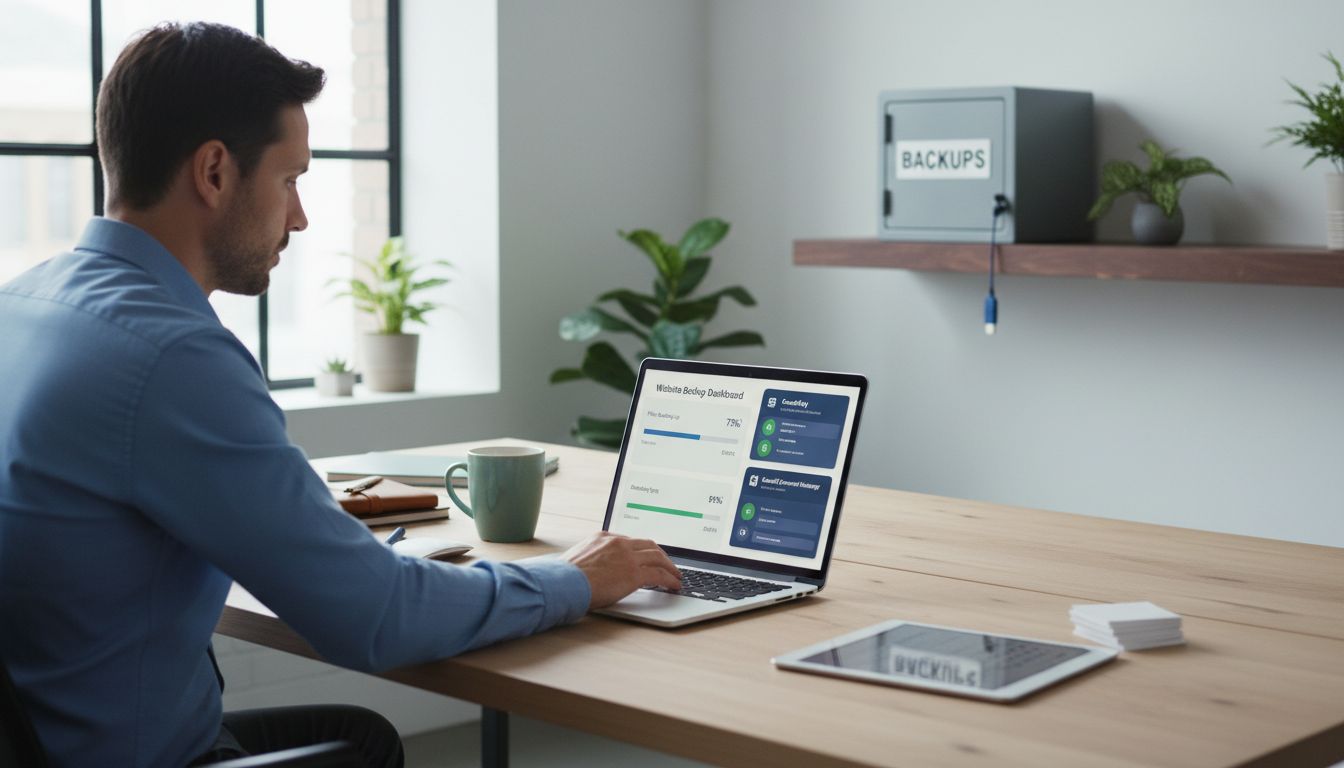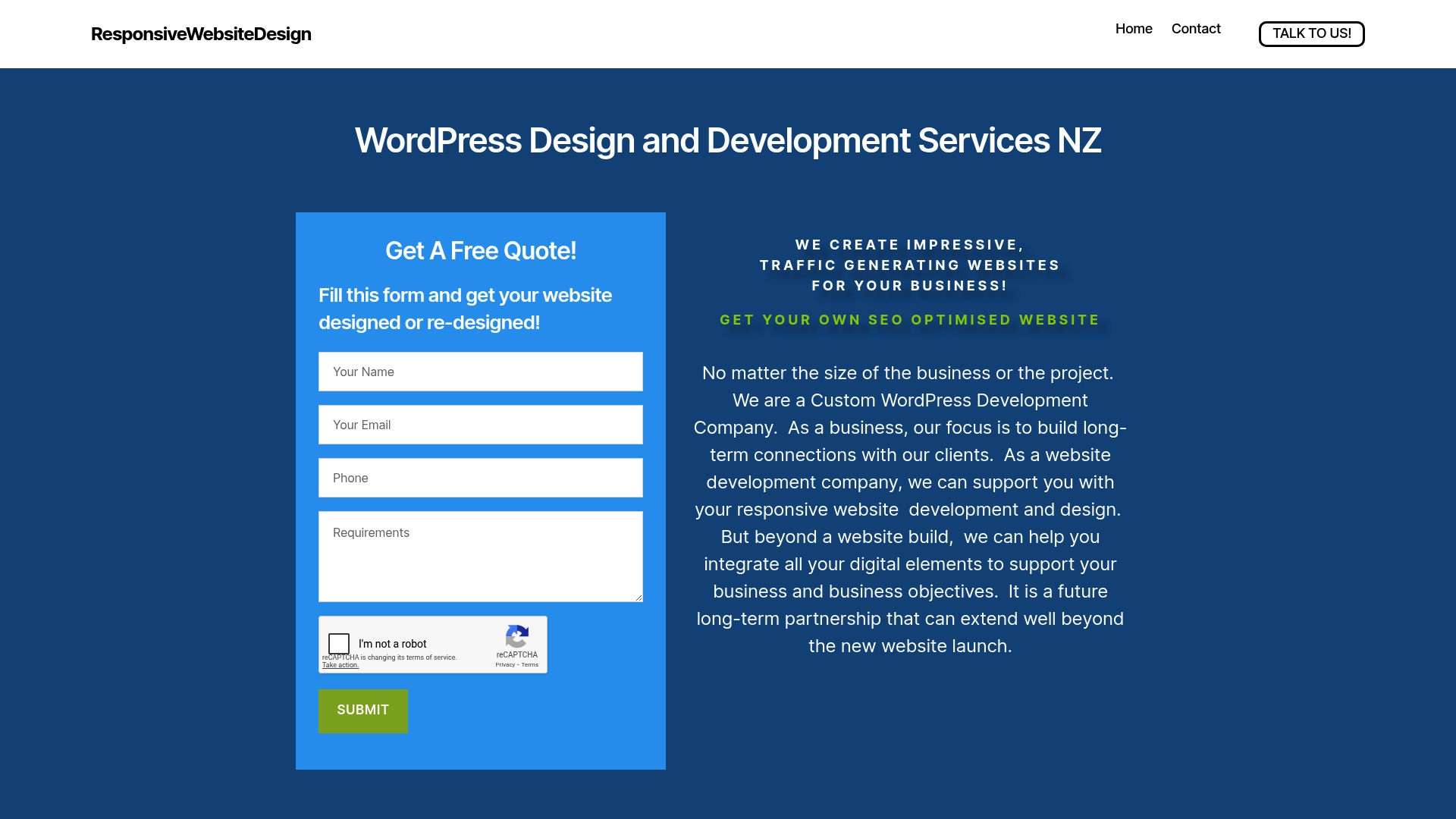Did you know that over 60 percent of website downtime incidents are caused by avoidable maintenance issues? Even a few hours of disruption can cost traffic, sales, and hard-earned trust. Staying ahead with a clear website maintenance plan helps you safeguard your site from surprise problems, supports security, and keeps everything running smoothly for your visitors. Discover the steps that can help transform maintenance from an afterthought to a reliable advantage.
Table of Contents
- Step 1: Prepare Essential Backups And Access Credentials
- Step 2: Update WordPress Core, Themes, And Plugins Securely
- Step 3: Scan For Malware And Strengthen Site Security
- Step 4: Optimize Website Speed And Mobile Responsiveness
- Step 5: Review SEO And Ensure All Key Content Is Current
- Step 6: Test Site Functionality And Verify Successful Updates
Quick Summary
| Key Point | Explanation |
|---|---|
| 1. Regularly back up your website | Use automated backup solutions to secure website files, databases, and configurations for easy recovery during disruptions. |
| 2. Prioritize WordPress updates | Update WordPress core, themes, and plugins regularly for security patches and compatibility, after backing up your site. |
| 3. Implement multi-layer site security | Install reliable security plugins and enable strong password policies and two-factor authentication to protect against threats. |
| 4. Optimize for speed and mobile | Regularly assess website performance, focusing on speed and mobile responsiveness to enhance user experience and SEO. |
| 5. Review and update SEO content | Conduct content audits quarterly to maintain relevance and improve search engine visibility through updated keywords and statistics. |
Step 1: Prepare essential backups and access credentials
Your website represents your digital storefront and protecting it requires strategic preparation. According to website maintenance research from Hyperping, a comprehensive maintenance plan demands regular backups that safeguard critical data and enable swift recovery during unexpected disruptions.
Start by selecting a reliable backup solution that automatically captures your entire website infrastructure. This means securing not just your website files but also databases, content management system configurations, and any custom code or plugins. Most WordPress hosting platforms offer built in backup tools that can schedule automatic snapshots of your entire digital ecosystem.
For access credentials management, create a secure password management system that centralizes all login information. Recommended best practices include using unique complex passwords for each platform avoiding repetitive credentials across different services. Consider implementing two factor authentication wherever possible to add an additional security layer.
Pro Tip: Store your access credentials in an encrypted password manager like LastPass or 1Password rather than spreadsheets or unsecured documents.
Net Branding recommends maintaining a physical backup document stored securely offsite that lists critical login information website administrator contacts and emergency recovery procedures. This provides an analog safety net in case digital systems become compromised.

Here’s a summary of essential backup and access credential practices:
| Practice | Recommended Method | Key Tools/Examples |
|---|---|---|
| Website Backups | Automated scheduled backups | Hosting backup tools Manual exports |
| Data Coverage | Full site: files, databases, configs | WordPress backup plugins |
| Credential Management | Encrypted password manager | LastPass 1Password |
| Access Security | Unique passwords 2FA | Password managers 2FA apps |
| Physical Backup | Offsite secure document | Printed admin details sheet |
By systematically preparing backups and managing access credentials proactively you transform potential website vulnerabilities into manageable risks. Your next step involves establishing a regular maintenance schedule to keep these protective measures current and effective.
Step 2: Update WordPress core, themes, and plugins securely
Updating your WordPress website is like performing routine maintenance on a high performance vehicle critical for optimal functionality and security. According to research from Hyperping, consistently updating WordPress core themes and plugins is an essential strategy to prevent potential vulnerabilities and ensure smooth digital operations.
Begin by creating a complete backup of your website before initiating any updates. This precautionary step ensures you can quickly restore your site if an unexpected compatibility issue arises during the update process. WordPress provides native update mechanisms directly within the dashboard making the process straightforward yet requiring careful attention.
Prioritize updates for WordPress core first as these often include critical security patches and performance improvements. Next systematically review theme and plugin updates checking for compatibility warnings and user reviews. Some updates might introduce conflicts with existing configurations so approach each update with strategic caution.
Pro Tip: Always update on a staging or test environment first to verify complete site functionality before applying changes to your live website.
Net Branding recommends implementing a structured update schedule perhaps weekly or biweekly to maintain consistent website health. Automated update tools can help streamline this process but manual review remains important to assess potential risks and maintain website integrity.
By methodically managing WordPress updates you transform potential security risks into proactive maintenance. Your next focus will involve monitoring website performance and ensuring all recent updates integrate smoothly with your existing digital infrastructure.
Step 3: Scan for malware and strengthen site security
Protecting your website from digital threats requires a proactive and comprehensive security approach. According to research from Hyperping website maintenance plans emphasize conducting regular malware scans as a fundamental strategy to safeguard your online presence and maintain user trust.
Begin by installing a reputable WordPress security plugin that offers comprehensive scanning capabilities. Look for tools that provide real time monitoring vulnerability detection and automatic threat removal. These plugins can systematically analyze your website files database and overall infrastructure identifying potential security risks before they escalate into significant problems.
Implement multi layer security protocols that go beyond standard scanning. This includes configuring strong password policies enabling two factor authentication limiting login attempts and restricting administrative access to specific IP addresses. WordPress websites are frequently targeted by automated bots seeking entry points so creating multiple defensive barriers becomes crucial.
Pro Tip: Regularly update your security plugins and conduct manual security audits to ensure your defensive strategies remain current against evolving digital threats.
Net Branding recommends establishing a consistent security maintenance routine where you perform comprehensive scans weekly and conduct deeper monthly security assessments. Some advanced security plugins offer scheduled scanning options that can automatically detect and quarantine potential malware without requiring constant manual intervention.
By systematically scanning for malware and implementing robust security measures you transform your website from a potential vulnerability into a secure digital fortress. Your next step involves monitoring website performance and ensuring these security protocols integrate seamlessly with your overall digital infrastructure.
Step 4: Optimize website speed and mobile responsiveness
Ensuring your website performs seamlessly across all devices is no longer optional but essential for digital success. According to research from Hyperping website maintenance plans emphasize speed optimization and mobile responsiveness as critical factors for user engagement and search engine performance.
Start by utilizing comprehensive performance testing tools like Google PageSpeed Insights which provide detailed analytics about your website loading times and mobile compatibility. These tools generate specific recommendations for improving site speed such as compressing images minimizing code and leveraging browser caching. Pay special attention to mobile performance metrics as an increasing number of users access websites through smartphones and tablets.
Implement responsive design principles that automatically adjust your website layout based on screen size and device type. This involves using flexible grid layouts fluid images and CSS media queries to create a consistent user experience. Learn more about responsive web design principles to understand how these techniques can transform your website functionality.
Pro Tip: Regularly test your website on multiple devices and screen sizes to ensure a truly responsive and adaptive design.
Net Branding recommends conducting monthly performance audits tracking key metrics like page load time bounce rate and mobile usability. Consider tools that provide ongoing monitoring and generate actionable insights for continuous improvement. Optimize large media files compress JavaScript and CSS and consider implementing content delivery networks to enhance global website performance.
By systematically improving website speed and mobile responsiveness you create a more engaging and accessible digital experience for your users. Your next focus will involve analyzing user interactions and fine tuning your website based on performance data.
Step 5: Review SEO and ensure all key content is current
Maintaining a competitive online presence requires ongoing SEO strategy and content refinement. According to research from Hyperping website maintenance plans emphasize regular content audits as a critical method for sustaining search engine visibility and relevance.
Begin your SEO review by utilizing comprehensive analytics tools like Google Search Console and SEMrush to evaluate current website performance. These platforms provide detailed insights into keyword rankings organic traffic search queries and potential technical SEO issues that might be impacting your website visibility. Pay special attention to pages with declining traffic or outdated information that could benefit from strategic updates.
systematically update existing content to reflect current industry trends and user search intent. This involves refreshing statistical data removing outdated references and incorporating recent developments in your field. Explore our comprehensive SEO services overview to understand how professional strategies can elevate your content quality.
Pro Tip: Create a content calendar that schedules regular review and update cycles for your most important website pages.
Net Branding recommends conducting quarterly content and SEO assessments to ensure your digital presence remains dynamic and engaging. Focus on optimizing meta descriptions title tags and header structures to improve search engine understanding of your content. Consider incorporating long tail keywords and addressing emerging user questions within your existing content framework.
By systematically reviewing and updating your SEO strategy you transform your website into a living responsive digital asset. Your next step involves analyzing user engagement metrics and refining your approach based on real world performance data.
Step 6: Test site functionality and verify successful updates
Ensuring your website operates smoothly after maintenance requires systematic and thorough testing procedures. According to research from Hyperping website maintenance plans emphasize comprehensive functionality checks as a critical step in maintaining optimal digital performance.
Initiate a comprehensive testing strategy by methodically reviewing all critical website functions across multiple devices and browsers. This means checking form submissions payment processing navigation menus contact links and interactive elements to confirm they function precisely as intended. Use tools like Browser Stack or Cross Browser Testing to simulate different user environments and identify potential compatibility issues before they impact your actual users.
Pay special attention to recent updates tracking how they interact with existing website infrastructure. Test each plugin theme and core WordPress update independently verifying that no conflicts arise during implementation. Simulate various user scenarios including account registration checkout processes and content interactions to ensure a seamless experience.
Pro Tip: Create a detailed testing checklist that covers every major website function to ensure nothing gets overlooked during your maintenance review.
Net Branding recommends implementing automated testing tools that can provide continuous monitoring and immediate alerts for any functionality disruptions. Consider setting up performance benchmarks that track load times user interaction speeds and overall website responsiveness. This proactive approach transforms potential technical challenges into opportunities for ongoing improvement.
By systematically testing and verifying website functionality you protect your digital asset from potential user experience disruptions.
Your next step involves documenting any discovered issues and developing a strategic plan for immediate resolution.
Strengthen Your Business Website with Expert Maintenance and SEO Support
Keeping your website secure, fast, and up to date is a constant challenge for business owners striving for online success. This article highlights essential steps like backing up your data, updating WordPress core, scanning for malware, and optimizing SEO to protect your digital presence and attract more visitors. If you find these tasks overwhelming or need a reliable partner to handle your site maintenance and boost your search rankings we can help. Explore our insights and strategies in the SEO Archives – ResponsiveWebsiteDesign to see how targeted optimization delivers measurable growth.

Take control of your online business success today by partnering with the team at ResponsiveWebsiteDesign.co.nz. We specialise in tailored WordPress design, security, and ongoing management to keep your website performing at its best while you focus on what matters most. Visit our homepage to learn more about our comprehensive services or browse the Uncategorized Archives – ResponsiveWebsiteDesign for additional expert advice. Make your website work harder and safer for your business now.
Frequently Asked Questions
What key backups should I perform for my website maintenance checklist?
To protect your website, ensure you create automatic backups of your entire site, including files, databases, and configurations. This action will enable a quick recovery if unexpected disruptions occur. Schedule these backups weekly or biweekly to keep all data current.
How often should I update my WordPress core, themes, and plugins?
It’s essential to update WordPress core, themes, and plugins every 1-2 weeks for optimal security and performance. Create a structured update schedule to systematically ensure your site remains secure and functional.
How can I test my website functionality after making updates?
Conduct a comprehensive functionality test after updates by reviewing all critical functions across various devices and browsers. Use a detailed checklist to ensure every feature, such as form submissions and payment processes, works correctly before going live.
What steps should I take to improve my website’s speed and mobile responsiveness?
To enhance speed and mobile responsiveness, utilize performance testing tools to analyze loading times and mobile compatibility. Prioritize optimizing images, minimizing code, and implementing responsive design principles to improve overall user experience.
How can I ensure my SEO content remains up-to-date?
Regularly review your website’s SEO content every quarter to keep it relevant and aligned with current industry trends. Focus on updating outdated statistics, optimizing meta tags, and refining your targeted keywords to support better search engine visibility.
